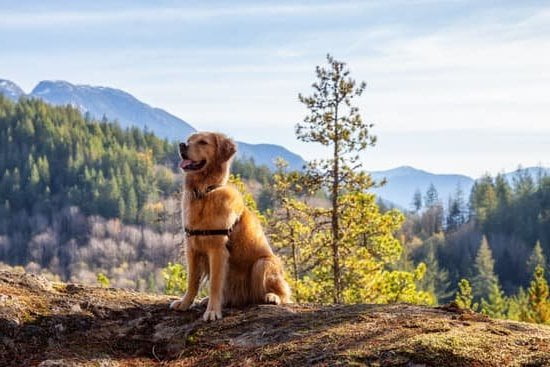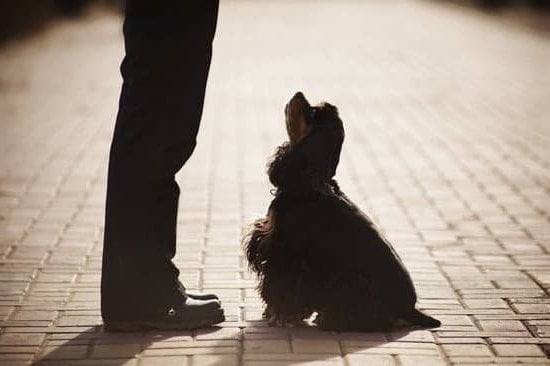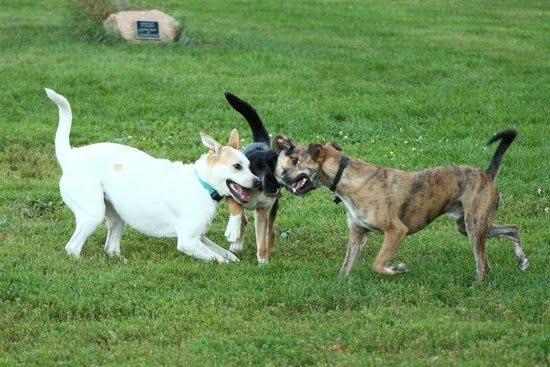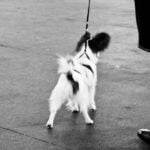Training your dog to accept other dogs is a crucial aspect of responsible pet ownership. If your furry friend displays aggression or discomfort around other dogs, it can be concerning and challenging to handle. Understanding the root of this problem is the first step in addressing it effectively.
The concept of dog aggression is multifaceted, and there can be various underlying reasons why your dog may not be accepting of other dogs. In this article, we will delve into the factors that contribute to this behavior and explore effective training techniques to help your dog overcome these challenges.
Early socialization plays a vital role in shaping your dog’s behavior towards other dogs. We will discuss the impact of socialization on your dog’s ability to accept other dogs, as well as the importance of positive reinforcement training techniques in promoting desirable behavior. Additionally, we will provide practical tips on how to gradually expose your dog to other dogs and interpret their body language and signals during interactions.
Socialization
Dogs are social animals by nature, and early socialization is crucial for their development and ability to interact with other dogs. The socialization period for puppies is between 3 and 14 weeks of age, during which they are more open to new experiences and are able to learn how to properly communicate and behave around other dogs. This critical time frame can significantly impact a dog’s ability to accept other dogs later in life.
Proper socialization involves exposing your puppy to a variety of environments, people, and other animals in a positive and controlled manner. This exposure helps them build confidence, learn appropriate play behavior, and become accustomed to different sounds, sights, and smells. By providing your puppy with these positive experiences during the critical socialization period, you can greatly increase the likelihood that they will grow up to be well-adjusted and accepting of other dogs.
One effective way to socialize your puppy with other dogs is through organized puppy classes or playgroups. These settings provide a safe environment for puppies to interact under the supervision of experienced trainers who can guide their interactions. Additionally, allowing your puppy to meet well-socialized adult dogs can also be beneficial as it provides them with valuable learning experiences from older, more experienced animals.
It’s important to remember that every dog is an individual, so the key is patience and consistent positive reinforcement when introducing your dog to new canine friends. Understanding that not all dogs will immediately get along with each other is essential; some may take longer than others depending on their personality, previous experiences, or breed tendencies.
By being patient and consistently implementing positive reinforcement techniques, you can help ensure that your dog learns how to accept other dogs in a calm and friendly manner.
| Aspect of Early Socialization | Impact on Dog’s Ability to Accept Other Dogs |
|---|---|
| Exposing puppies to various environments | Builds confidence and familiarity with different surroundings |
| Obedience training during the critical period | Lays foundation for good communication skills with other dogs |
| Organized puppy classes or playgroups | Provides a safe environment for supervised interactions with other puppies |
Positive Reinforcement Training
Understanding Positive Reinforcement
Positive reinforcement training involves rewarding your dog for displaying the desired behavior. This can be in the form of treats, praise, or toys. When it comes to training your dog to accept other dogs, positive reinforcement can be a highly effective approach.
The Benefits of Positive Reinforcement
Using positive reinforcement to train your dog to accept other dogs has several benefits. It creates a positive association with other dogs, making your dog more likely to react positively when encountering them. It also helps build trust and strengthen the bond between you and your dog.
How to Implement Positive Reinforcement
To begin using positive reinforcement in training your dog to accept other dogs, start by associating the sight or presence of another dog with something pleasant for your own pup. This could mean giving them a treat every time they see another dog from a distance, or providing praise and affection when they display calm behavior around other dogs.
When implementing positive reinforcement techniques, consistency is key. Make sure to reward your dog every time they exhibit appropriate behavior in the presence of other dogs. Over time, this will reinforce the idea that being around other dogs leads to positive experiences for them.
By using positive reinforcement training methods, you can gradually change your dog’s perception of other dogs from one of fear or aggression to one of acceptance and positivity. Remember that each dog is unique and may respond differently to training approaches, so patience and persistence are crucial in this process.
Gradual Exposure
Training your dog to accept other dogs can be a challenging but rewarding process. Gradual exposure is an essential part of this training, as it allows your dog to become familiar with other dogs in a controlled and safe environment. Here are some steps to help you gradually expose your dog to other dogs:
1. Start with Familiar Dogs: Begin by introducing your dog to familiar and friendly dogs, such as those owned by friends or family members. This can help build positive associations with other dogs.
2. Use Positive Reinforcement: When your dog exhibits calm and non-aggressive behavior around other dogs, be sure to reward them with treats, praise, or toys. This will reinforce the idea that being around other dogs is a positive experience.
3. Increase Exposure Over Time: Gradually increase the time and proximity of your dog’s interactions with other dogs as they become more comfortable. Be patient and take things at your dog’s pace to avoid overwhelming them.
4. Controlled Environments: Choose controlled environments for these interactions, such as fenced-in areas or on-leash walks. This will give you better control over the situation and ensure the safety of all dogs involved.
5. Monitor Body Language: Pay close attention to both your dog’s body language and that of the other dogs during their interactions. Look for signs of stress or discomfort, and be ready to step in if necessary.
By following these steps and being patient with the process, you can help your dog gradually become more accepting of other dogs. Remember that every dog is different, so take the time to understand what works best for your individual pet when it comes to training them in this area.
Body Language and Signals
Understanding your dog’s body language and signals is crucial when training them to accept other dogs. By being able to interpret their behavior, you can better understand their feelings and address any discomfort they may be experiencing. Here are some key body language and signals to look out for when introducing your dog to other dogs:
- Tail wagging: While a wagging tail is often associated with happiness, it can also indicate excitement or arousal, which may lead to aggression in some dogs. Pay attention to the speed and intensity of the wag as well as the position of the tail.
- Ears: A dog’s ears can give insight into their emotional state. Raised ears may indicate attentiveness or alertness, while flattened ears can signal fear or submission.
- Eye contact: Direct eye contact between dogs can be a sign of dominance or aggression. Teach your dog to maintain neutral eye contact when meeting other dogs to prevent any potential confrontation.
- Body posture: A stiff and upright posture can indicate tension or aggression, while a relaxed and loose posture signifies comfort and friendliness.
Once you’ve learned how to read your dog’s body language, you can use this knowledge to improve their behavior when encountering other dogs. For example, if you notice signs of discomfort such as tensed muscles or avoidance behaviors, it’s important to remove your dog from the situation and address any underlying issues before attempting further introductions.
Using positive reinforcement techniques, such as rewarding calm behavior around other dogs, can help desensitize your dog to these encounters over time.
Finally, remember that each dog is unique and may exhibit different body language cues. It’s important to observe your own dog’s specific behaviors and consult with a professional if needed. With patience and consistency in training, you can help your dog learn to accept other dogs in a positive way.
Seeking Professional Help
While training your dog to accept other dogs can often be done successfully with positive reinforcement techniques and gradual exposure, there are some cases where seeking professional help may be necessary. If your dog displays severe aggression towards other dogs, exhibits intense fear or anxiety, or has a history of aggressive behavior, it is important to enlist the assistance of a professional dog trainer or behaviorist.
Professional trainers and behaviorists have the expertise and experience to assess your dog’s behavior, identify underlying issues, and develop a tailored training plan to address the specific challenges your dog may have in accepting other dogs. They can also provide valuable guidance on how to modify your own behavior and interactions with your dog to support their training process.
Additionally, working with a professional can provide you with access to controlled environments, such as training facilities or obedience classes, where your dog can safely interact with other dogs under supervision. This can be particularly beneficial for dogs who struggle with socialization and need extra support in learning how to behave around their canine counterparts.
Overall, seeking professional help should not be seen as a sign of failure but rather as a proactive step towards ensuring the safety and well-being of both your dog and other dogs they may encounter. With the right guidance and support from a professional, you can increase the likelihood of successful training outcomes for your dog in terms of accepting other dogs.
| Professional Help | Benefits |
|---|---|
| Expertise in assessing behavior | Tailored training plans |
| Access to controlled environments | Supervision during interactions |
| Proactive step for safety | Potential for successful outcomes |
Managing and Supervising Interactions
Creating a Safe Environment for Introductions
When introducing your dog to other dogs, it’s crucial to ensure that the environment is safe and controlled. This means choosing neutral territory where neither dog feels territorial, such as a park or open space. Keep both dogs on leash initially and allow them to approach each other at their own pace. It’s important to stay calm and assertive during this process to help your dog feel more at ease.
Recognizing Warning Signs
It’s essential for dog owners to learn how to recognize signs of potential aggression in their own dog, as well as in other dogs. Common warning signs include raised hackles, growling, barking, stiff body posture, and lunging. If you notice any of these behaviors in either dog during an introduction, it’s important to separate them immediately and seek professional assistance if needed.
Handling Aggressive Behavior
If your dog shows signs of aggression towards another dog during an introduction, it’s crucial to handle the situation calmly and assertively. Avoid shouting or physically punishing your dog, as this can escalate the situation.
Instead, gently but firmly remove your dog from the situation while using a command like “leave it” or “sit” to redirect their attention. After the incident, it’s important to assess what may have triggered the aggression and work on addressing those triggers through training.
By understanding how to create a safe environment for introductions, recognizing warning signs of aggression, and handling aggressive behavior calmly and assertively, you can effectively manage and supervise interactions between your dog and other dogs. With patience and consistency in training, you can help your dog learn to accept other dogs in a positive manner.
Patience and Consistency
In conclusion, training your dog to accept other dogs requires patience and consistency. It is important to understand that this process will take time and may involve setbacks along the way. By being patient and consistent in your efforts, you can help your dog overcome their issues with accepting other dogs and improve their behavior.
One important tip for staying committed to the training process is to set realistic expectations. Every dog is different, and some may require more time and effort to adjust to being around other dogs. It’s crucial not to get discouraged if progress seems slow, as with continued patience and consistency, you will likely see improvements over time.
Seeking professional help is also an option if you are struggling to train your dog on your own. A professional dog trainer or behaviorist can provide guidance tailored to your specific situation and offer techniques that may be more effective for your dog. Remember that it is okay to ask for help when needed, as improving your dog’s behavior towards other dogs can greatly enhance their overall quality of life.
Frequently Asked Questions
How Do I Train My Dog to Be Friendly to Other Dogs?
Training your dog to be friendly to other dogs involves socialization and positive reinforcement. Gradually expose your dog to other dogs in controlled settings, rewarding calm and friendly behavior. Consistent training and patience are key.
How Long Does It Take for a Dog to Get Used to Other Dogs?
The time it takes for a dog to get used to other dogs can vary depending on the individual dog’s temperament and past experiences. It could take weeks or even months of consistent socialization for some dogs to become comfortable around others.
How Do I Train My Dog to Not Be Reactive to Other Dogs?
To train your dog not to be reactive to other dogs, start by identifying triggers that cause the reactive behavior. Gradually desensitize your dog to these triggers using positive reinforcement and counter-conditioning techniques. Seek professional help if needed.

Welcome to the blog! I am a professional dog trainer and have been working with dogs for many years. In this blog, I will be discussing various topics related to dog training, including tips, tricks, and advice. I hope you find this information helpful and informative. Thanks for reading!





